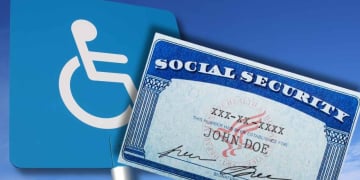Approximately 195,000 Social Security beneficiaries in the United States will experience reductions in their payments this month. This is due to the resumption of foreclosures by the federal government. Foreclosures affect borrowers in default on federal student loans.
The Departments of Education and the Treasury began sending out notices in May, informing them of the impending Social Security benefits reduction. Payments through offsets began in June.
This action marks the end of a five-year pause in these clawbacks. The Trump administration reactivated the collection of unpaid student loans. This is the first time since the start of the pandemic that these benefit reductions have been implemented.
More than 450,000 Social Security beneficiaries will be affected
The change directly impacts older adults who depend on Social Security. For many, these payments are their primary or only source of income. The Consumer Financial Protection Bureau (CFPB) reported relevant data.
The CFPB indicated that approximately 450,000 Americans aged 62 and older are in default. These borrowers likely receive Social Security payments. The resumption of foreclosures increases the risk of poverty for financially vulnerable retirees.
The number of people over 62 with loans in default has increased significantly. This affected group has grown by more than 3,000% since 2001, according to the CFPB. Many rely almost exclusively on Social Security to cover their basic expenses.
What will Social Security payment clawbacks be like?
The Treasury Offset Program authorizes these withholdings. It allows the government to withhold up to 15% of the monthly Social Security payment. This applies to borrowers in default on federal student loans.
The protections implemented during the pandemic had halted these collections. They also suspended negative reporting to credit bureaus. These safeguards ended when accountability was restored to the lending system.
A borrower defaults after 270 days without making payments. Loans in this situation are often transferred to collection agencies. These agencies can request garnishments on tax refunds, wages, or retirement benefits.
Warnings were sent to more than 195,000 delinquent borrowers
In May, the Department of Education sent 30-day warnings. The notices reached 195,000 borrowers affected by foreclosures. Their Social Security benefits began to be reduced in June.
The seized funds are used primarily for interest and collection fees. A relatively small portion is used to reduce the principal of the original loan. This limits progress in repaying the underlying debt.
Foreclosures force many beneficiaries to make difficult decisions. They often face the choice between meeting basic needs and paying for medical care. The reduction in disposable income worsens their financial situation.
Borrowers in default lose eligibility for additional federal student aid. They may also suffer long-term damage to their credit scores, which affects their ability to obtain future financing.
Access to loans for housing or other major purchases is compromised. The consequences of default extend beyond the reduction in immediate benefits. They impact the long-term financial health of those impacted.




